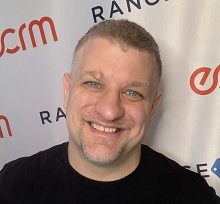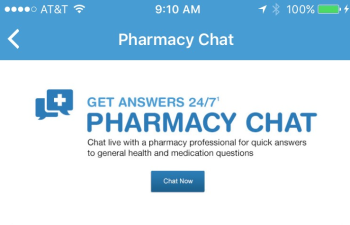Hi-Tech Enables Hi-Touch for Pharmacy Ops 1/3/2017
Over the past several years, the pharmacy industry has become increasingly hi-tech. We can use apps to refill prescriptions that were e-prescribed by physicians and likely packaged by robotic dispensers, and even have the ability to discuss our medication’s side effects with a pharmacist via instant messaging or video chat. Not only are these technologies enhancing our access, but they are also helping to streamline pharmacy operations at the same time.
This was one the key themes touched on by attendees interviewed at ECRM’s recent Pharmacy Technology, Services & Automation EPPS – how technology can be used to enable pharmacy operations to deliver a high level of consistent care while reducing the cost to serve and cost to fill, and at the same time free up resources so pharmacists and their staff can provide more value-added services to patients.
“We need to figure out how to pull the pharmacist into medication therapy management, immunizations, and other public health based activities that maximize patient spend while improving health,” said one attendee. “They should be getting the most of their pharm licenses.”
In other words, pharmacists need to be able to spend more time actually being pharmacists, promoting adherence and better outcomes. But accomplishing this is not an easy task in the face of shrinking pharmacy margins, and particularly DIR fees, a topic which came up continually among pharmacists we spoke with.
By automating routine processes and services, pharmacists are able to do more with less and spend more time consulting with patients. Following are some of the key technologies and automation services represented at the EPPS that were particularly noted by attendees:
- Medication synchronization: Coordinating the delivery of all of a patients medications at the same time to provide more time for pharmacist engagement
- Central fill: Using Central Fill, pharmacies can aggregate prescription orders from multiple stores, and direct them to a centrally located fulfillment center, where they are assembled, verified, packaged, and delivered patient-ready back to the originating pharmacy, or mailed directly to the patient.
- Telehealth systems: These web-based systems enable pharmacists to consult with patients via a videoconference-type of interface, and help to increase patient access.
- E-prescribing: Eliminates the need for paper and ensures accuracy.
- Inventory control systems: Ensuring that the right meds are at the right stores at the right times while preventing excess inventory
- Workflow management systems: Systems in place that enable pharmacy staff to conduct accuracy checks when filling prescriptions, provide prescription status management, support online refills, and collect electronic signatures,
- Interactive Voice Response systems: These systems enable patients to use a touch-tone phone to order their prescription refills, verify that they are ready prior to pickup, and access your pharmacy’s hours and location information without the need to speak live to pharmacy staff.
- Mobile apps: These can be used for prescription management and even pharmacist consulting via live video or text chat
- Temp alert systems: For specialty pharmacies, these systems track the temperatures of medications that need to be refrigerated, to ensure they remain within the correct temperature range at every point in the supply chain.
One area of particular concern among pharmacists attending the EPPS meetings are direct and indirect remuneration (DIR) fees. These are fees that are assessed – often weeks or months after medication is dispensed to a patient and a pharmacy is reimbursed -- that can result in financial loss on filled prescriptions. As there is a lack of information provided as to how much and when DIR fees will be collected or assessed, pharmacists don’t become aware of the impact of these fees till it’s too late.
“They have always been out there, but legislation has changed and pharmacies are losing money,” said one pharmacist attendee. “And there is no regulation, so I can’t catch them before adjudication or claims.”
Perhaps this lack of transparency is one area that is ripe for technology companies to address.

